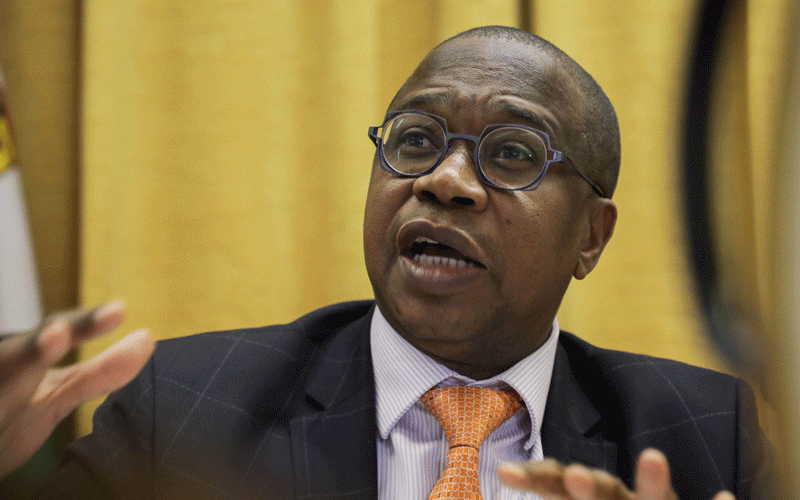
On the 30th of November 2023, the Minister of Finance, Economic Development and Investment Promotion, Professor Mthuli Ncube, presented the 2024 Zimbabwe National Budget Statement under the theme “Consolidating Economic Transformation”.
While the Budget was presented in local currency (ZWL), the Minister highlighted that about 60% of the budget is US dollar linked, while foreign currency inflows into the consolidated revenue fund account 48% of total revenue.
Our immediate reaction to the statement was that it would have been prudent to present the figures in US dollars. We highlight that the Zimbabwean economy is marked by high levels of dollarisation given estimated US dollar transactions in the economy of about 78%.
In the same vein, the Government of Zimbabwe, through Statutory Instrument 218 of 2023, extended the use of the multicurrency regime to 2030, to allow policy space for a smooth transition towards use of the domestic currency.
As of September 2023, foreign currency deposits accounted for 83% of total money supply while the proportion of foreign currency-denominated loans increased from 78% in March 2023 to 88%. In our view, the presentation of US dollar figures would also be critical for planning and forecasting purposes given the instability of the local currency unit (ZWL).
This report focuses on insights emanating from the 2024 National Budget. A key highlight is that the tax proposals in the Budget have triggered a lot of attention in terms of the impact it will have on the consumption patterns of individuals, households, and businesses. Mark & Associates has gathered different perspectives and recommendations from industry experts, analysts and economists with an objective of influencing policy, particularly on the tax proposals anchoring the 2024 National Budget.
That said, it is also important to take a deep dive into key trends and risks that still exist and continue to hamper the potential for sustainable growth in Zimbabwe. As part of our research, we look at the broader macro-economic themes that, in our view, influenced an accelerated and aggressive tax collection approach proposed by Professor Mthuli Ncube
Slow rise in incomes in SSA
- Budget dampens workers’ hopes
- Govt issues $24 billion Covid-19 guarantees
- Letter to my People:They have no answers for Nero’s charisma
- ZMX to enhance farm profitability
Keep Reading
Looking at the Sub-Saharan Africa (SSA) region, most economies continue to grapple with elevated levels of inflation and exchange rate pressures while growth is being undermined by decline in global demand, security issues in the oil producing countries and power shortages.
Geopolitical tensions, and climate change related shocks are also hampering economic activity. Overall, growth in Sub-Saharan Africa is projected to slow to 3.3% in 2023, as external headwinds, persistent inflation, higher borrowing costs, and increased insecurity weigh on activity.
Fiscal space has narrowed further, while surging import bills and higher debt burdens have heightened financing needs. The real GDP growth rate of the Southern African Development Community (SADC) is projected to decelerate to 1.6% in 2023 from 2.7% in 2022, before recovering to 2.7% in 2024.
Productivity Headwinds in 2024 and Beyond
Mark & Associates notes significant productivity headwinds associated with (i) capital constraints, (ii) policy shifts and (iii) electricity shortages. Zimbabwe has been experiencing severe electricity load shedding attributable to technical challenges at thermal power generation plants coupled with falling dam levels and import constraints.
We note that most of Zimbabwe’s thermal power plants like the Munyati Thermal Power plant built between 1946 and 1957 have outlived their lifespan and are becoming too uneconomic to operate due to high repairs and maintenance costs. In our view, energy supply constraints will cripple productivity and capacity utilisation across Zimbabwean industries. Limited supply of electricity implies there are technological inefficiencies in the country, and this will have an adverse effect on total output. Our thesis is supported by the Cobb–Douglas production function, which shows that output in an economy is a function
Technological progress,
Capital deepening and
Labour
Domestic economic developments
Structural weakness, policy uncertainty, corruption and international isolation have inhibited the Zimbabwean economy from performing adequately since the early 2000s, resulting in episodes of economic recessions.
While the 2009-12 period witnessed a recovery in the economy, characterised by a revival in foreign investment and a multi-currency regime, political fragility has remained the major culprit.
The government (MoF) projects the Zimbabwean economy to grow by 5.5% in 2023 on account of better-than-expected output in agriculture, in particular, tobacco, wheat, and cotton.
However, economic growth is expected to slow down to 3.5% in 2024, mainly owing to (i) the anticipated impact of the El-Nino phenomenon being forecasted for the 2023/24 summer cropping season on agricultural output, and (ii) declining mineral commodity prices attributable to the global economic slowdown.
Monetary policy ineffectiveness
The role of any Central Bank in an economy is inflation-targeting and fostering macro-economic stability through the effective management of the exchange rate. However, Mark & Associates maintains a view that the institutional design of the Reserve Bank of Zimbabwe hinders monetary policy effectiveness and has identified the following critical issues;
Political independence, autonomy
Research has shown that Central Banks that plan for the long term and do not focus on short-term economic performance are more likely to maintain a commitment to low inflation. It is very critical for the RBZ to be independent from political control as an important way to reassure the public about the Bank’s credibility. Moreover, the degree of autonomy delegated to the Central Bank affects the design of the structure of the governing bodies and the accountability provisions.
Credibility of Monetary Policy. An analysis of inflation developments in Zimbabwe clearly reveals that a lack confidence in the ZWL is a big factor in terms of fostering macro-economic stability. This is demonstrated by the huge premium between the official exchange rate and the parallel market rate, which is currently at cZWL9,500/USD.
Exchange rate developments
Credibility also refers to the degree of confidence that the public has in the central bank's determination and ability to meet its announced objectives. Policy changes and inconsistences have a negative impact on the RBZ’s credibility as an institution.
In addition, a credible monetary policy should be implemented by an independent central bank through a rule which bounds the monetary authority's actions, avoiding the time-inconsistency problem.
Time Consistent Policies. A time consistent policy is one where a future policymaker lacks the opportunity or the incentive to default. On the contrary, a policy lacks time consistency when a future policymaker has both the means and the motivation to break the commitment.
The fundamental insight regarding the notion of time-inconsistency and credibility, presented by Kydland and Prescott (1977), is that when economic agents are forward-looking, the policy problem emerges as a dynamic game between the government and the private sector - where the government is the dominant player, and the private sector is the follower.
The New Classical approach argues that since the monetary authority has no precommitment with an announced policy and usually makes use of its discretionary powers, it will have an incentive to cheat, making the announced policy time-inconsistent and then non-credible.
Consequences for Bad Inflation Outcomes – There is need to introduce laws so that Central Bankers or monetary authorities in Zimbabwe take responsibility and are accountable when inflation targets are not met.
This will help make the public believe that they will commit to a low inflation rate. Most Modern Central Banks have legally imposed inflation targets.
For example, the Governor of the Bank of England must write a letter to the Chancellor explaining why targets are not met. In Zimbabwe, nothing has happened to Governor John Mangudya even after consistently failing to meet inflation targets.
Effective Communication- Monetary authorities in Zimbabwe should consistently communicate and update the public on all important developments to the public. There is need to provide consistent forward guidance on major macro-economic indicators, including the desired and expected path of interest rates, exchange rates and inflation.
Overall, we think political interests will always take centre stage thereby limiting any efforts by the RBZ to successfully foster any form of macro-economic stability.
An Unresolved Albatross: The Zimbabwe Debt Overhang
One of the major constraints that Zimbabwe is facing today is the issue of a massive debt overhang. The predicament is that the country then fails to unlock external funding to support local production mainly because of a debt trap. This also affects the ability of the country to access reasonable cost of capital critical for financing infrastructure projects.
We note that Public and Publicly Guaranteed (PPG) external debt for Zimbabwe amounted to USD12.7 billion as at end September 2023. The debt is weighing down heavily on the country’s development needs and will continue to negatively impact the country’s ability to meet the SDGs targets, especially in health, education, and social protection.










